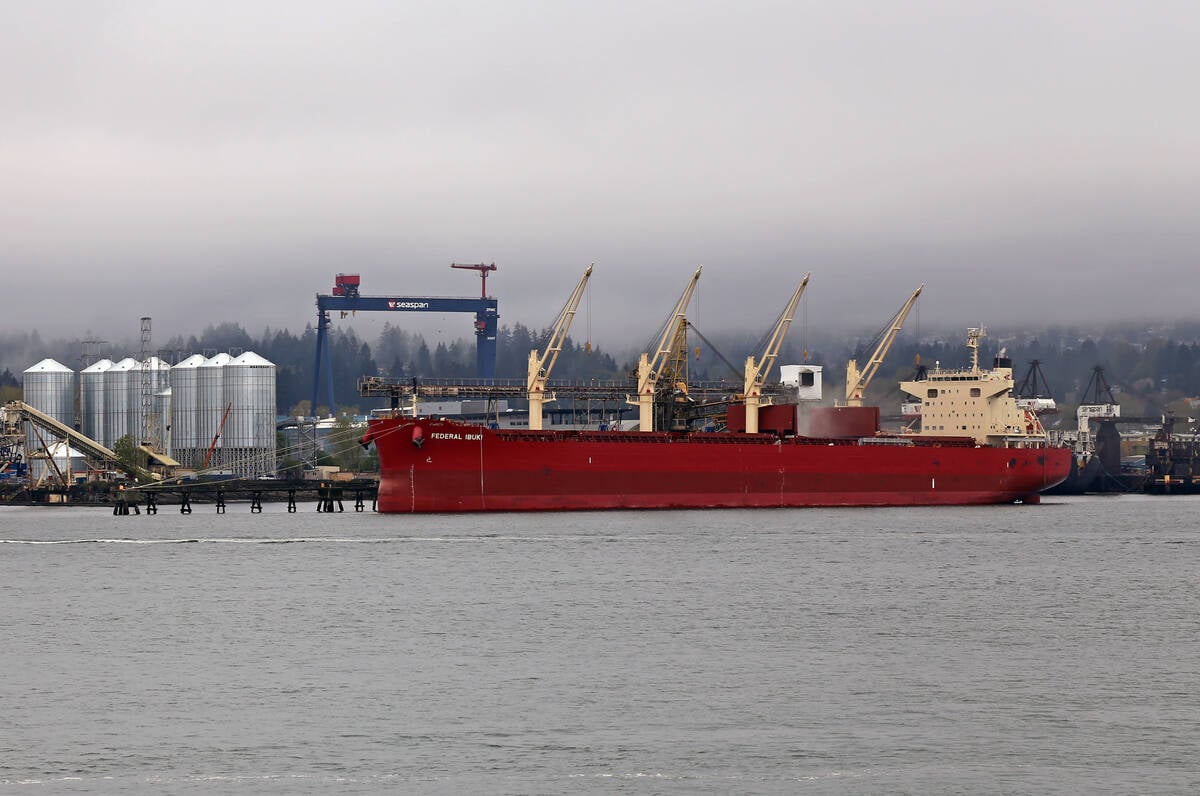To a western Canadian farmer, eastern Canadian farmers can appear to be drowning in an ocean of onerous regulations.
But prairie farmers are beginning to face a rising tide of restrictions when setting up new hog barns.
Already the regulatory waters have poured into the centre of the country, with Manitoba hog producers facing a new phosphorus regime, and tougher regulations expected to filter into Saskatchewan and Alberta.
But the situation is not as bad as producers may fear, concludes a study by Ontario’s George Morris Centre at the University of Guelph.
Read Also

Vancouver port says it has improved efficiency
Grain movement has been strong at the Port of Vancouver due in part to a new centralized scheduling system.
The environmental demands placed on new hog operations are not a major cost to producers.
“The costs of compliance are not as high as one would expect,” said researcher Beth Sparling.
The study found that environmental compliance costs, such as nutrient management plans and soil testing, accounted for only about 0.5 percent of the costs of running a modern hog barn.
However, the study’s authors point out that their analysis of environmental compliance does not include the expense of manure storage or spreading because it considered those part of the cost of doing business.
The study found that Quebec’s regulatory regime was most restrictive, but the Ontario system was the most expensive for farmers.
Manitoba was rated as having the second most expensive regulatory burden.
Quebec’s costs would have been higher, the authors say, but for the fact that the hog industry there has been under a development moratorium since 2002.
“We saw that in Ontario and Quebec the costs were a little higher,” said Sparling.
“We’ve seen new and more modern regulations coming in Quebec and Ontario and now Manitoba seems to be moving toward that.”
From a hog producer’s perspective, the western provinces appear to have more attractive regulatory demands and Saskatchewan is the winner. Its regulations and costs appear to be the lowest in the country.
“As we looked across Western Canada, it was clear that, particularly in Saskatchewan, costs were a little lower in terms of complying with those regulations,” said Sparling.
The research was done in 2006 and therefore does not include the Manitoba government’s new rules for water quality and nutrient management, which hog producers have said will be expensive to comply with.
The authors said environmental regulations need to be clear and uniform within provinces.
“If you’ve got provincial control, then all of the hog operations understand the rules, everybody has got the same set of rules they have to follow and there is no jurisdictional competitiveness issues,” said study co-author Cher Brethour.
Some hog industry officials and producers question some of the report’s assumptions and data.
Some of the study’s numbers come from another study that was completed in 2002, well before many of the more onerous and expensive regulations were introduced in several provinces.
And some said that the report’s assumption that manure handling is simply a cost of doing business obscures real provincial differences that have arisen because of varying approaches to nutrient management.

















